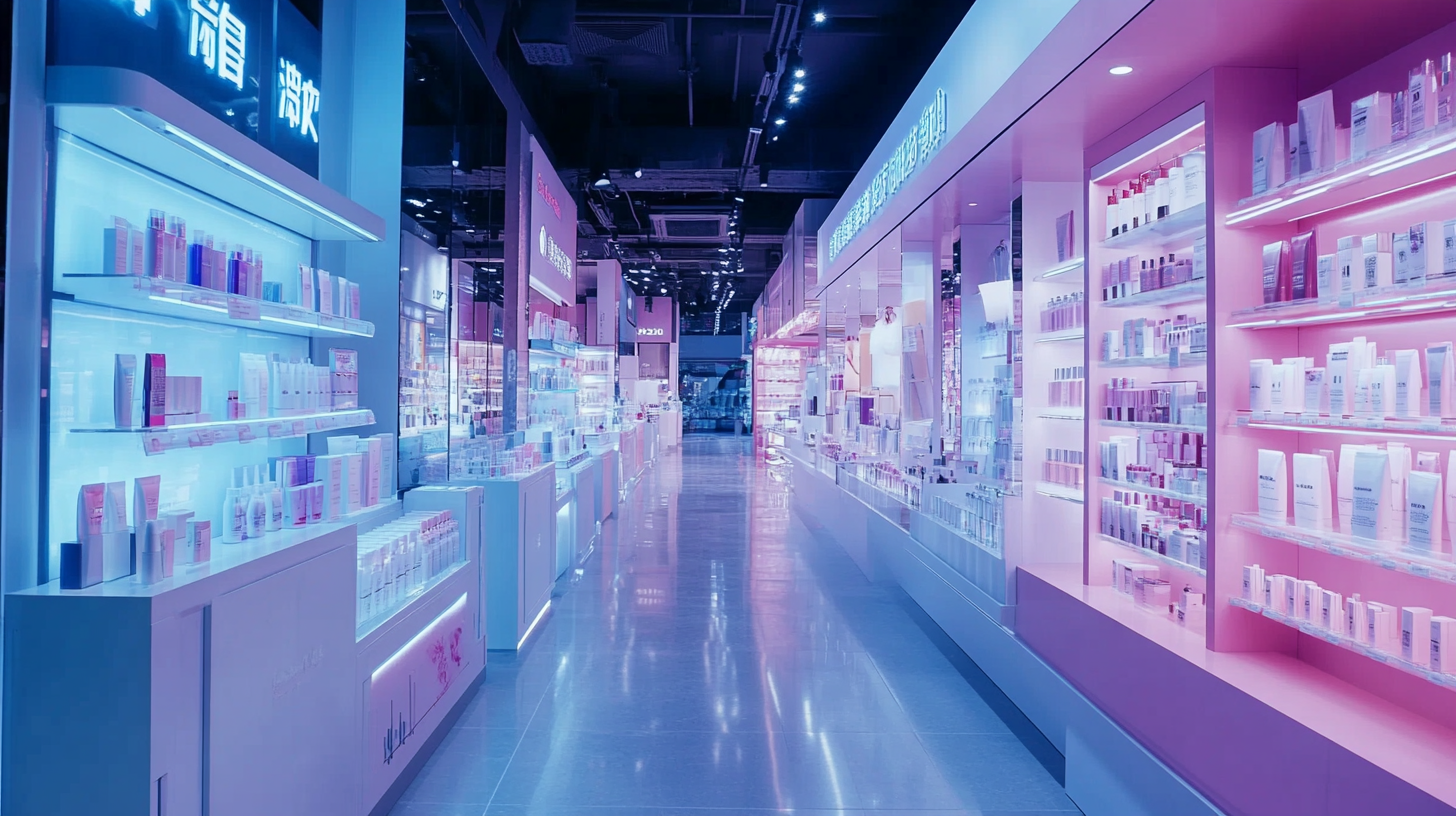Strategies for Sourcing Innovative Beauty Products Globally
In today’s fast-paced and ever-evolving beauty industry, the demand for innovative beauty products has reached unprecedented levels. Consumers are increasingly seeking unique and effective solutions that elevate their self-care routines, prompting brands to explore new horizons in product development. Sourcing these groundbreaking beauty products globally is not just a trend, but a necessity for businesses aiming to remain competitive. This blog delves into strategic approaches for identifying and procuring innovative beauty products from diverse markets around the world.
As the beauty landscape continues to diversify, the opportunity to discover unique ingredients, formulations, and technologies from different cultures adds a layer of excitement for brands and consumers alike. Navigating the complexities of global sourcing requires a keen eye for emerging trends, a deep understanding of consumer preferences, and an established network of reliable suppliers. By employing strategic methodologies, beauty brands can harness the potential of international markets and bring forward cutting-edge beauty products that resonate with their audiences. Join us as we explore actionable strategies for effectively sourcing innovative beauty products on a global scale.

Understanding Global Beauty Market Trends: Key Growth Statistics and Insights
The global beauty market is experiencing remarkable growth, fueled by evolving consumer preferences and innovative product offerings. As of 2024, the global cosmetic skin care market was valued at approximately USD 146.6 billion, with projections indicating it will rise to USD 197.2 billion by 2030, achieving a compound annual growth rate (CAGR) of 5.1%. This growth signals a heightened demand for diverse and specialized beauty products on the global stage, particularly in functional and sustainable cosmetic formulations. The cosmetics sector as a whole is anticipated to expand significantly, with a valuation of USD 311.23 billion in 2024, expected to escalate to USD 519.15 billion by 2033. This growth trajectory is influenced by shifting consumer spending priorities, particularly in regions like the UK, where health and beauty expenditures have seen notable transformations driven by social media trends and influencer culture. These dynamics underscore the importance of understanding consumer behavior and market trends to effectively source innovative beauty products that resonate with diverse consumer bases. Additionally, reports such as the Boots Beauty Trends Report 2025 highlight the emerging trends poised to reshape the industry, while also shedding light on untapped market segments such as Generation X. With these insights, brands can better position themselves to meet the evolving demands of consumers and leverage growth opportunities within this vibrant market. Keeping an eye on these statistics and trends will be crucial for stakeholders aiming to navigate the complexities of the global beauty landscape.

Leveraging E-commerce Platforms for Global Product Sourcing in the Beauty Sector
In today's rapidly evolving beauty industry, leveraging e-commerce platforms for global product sourcing has transformed how businesses connect with innovative beauty solutions. With the advent of digital marketplaces, brands can now explore untapped markets and discover cutting-edge products from around the world with unprecedented ease. E-commerce platforms not only provide a vast array of beauty products but also offer essential market insights that can guide sourcing strategies.
The key to successful sourcing lies in identifying reliable e-commerce platforms that specialize in beauty products. These platforms often feature a plethora of vendors from various regions, showcasing unique, culturally inspired products that cater to diverse consumer preferences. By engaging with these platforms, beauty brands can also tap into customer reviews and ratings to evaluate the quality and effectiveness of new products before making sourcing decisions.
Moreover, e-commerce platforms enhance the sourcing process by providing tools for seamless communication and collaboration with suppliers. Businesses can negotiate prices, discuss customization options, and establish logistics arrangements directly through these digital channels. This level of connectivity fosters strong partnerships and promotes transparency, allowing brands to curate innovative beauty lines that resonate with their target markets. Embracing these digital avenues will undoubtedly position businesses at the forefront of the beauty sector, ensuring they remain competitive and relevant in an increasingly globalized marketplace.

Identifying and Engaging Innovative Beauty Startups Around the World
Identifying and engaging innovative beauty startups around the world requires a strategic approach that combines market research, networking, and a keen understanding of emerging trends. First, it’s essential to conduct thorough market research to identify regions known for their beauty innovations. Areas like South Korea, Japan, and parts of Europe are often at the forefront of beauty technology and ingredient discovery. By attending local beauty trade shows and exhibitions, brands can gain firsthand insights into the latest products, techniques, and consumer preferences that are shaping the industry.
Once potential startups are identified, engagement becomes crucial. Building relationships with these companies can often lead to fruitful collaborations. Utilizing platforms such as social media, industry forums, and networking events can help establish connections with founders and leaders of innovative startups. Additionally, reaching out directly to these companies with genuine interest can facilitate partnerships that are mutually beneficial, allowing established brands to integrate fresh ideas into their offerings.
Moreover, it’s vital to stay informed about global beauty trends and consumer behavior, as these factors can influence which startups will thrive. Monitoring beauty blogs, influencer recommendations, and market analytics can provide valuable insights into what new products or brands are gaining traction. By being proactive in both sourcing and engaging with innovative beauty startups, brands can not only keep their product lines fresh and exciting but also position themselves as leaders in the rapidly evolving beauty landscape.

Utilizing Social Media and Influencer Marketing to Discover Unique Products
Social media has transformed the way beauty products are discovered and sourced globally. Platforms like Instagram, TikTok, and Pinterest serve as vibrant marketplaces where new and innovative products are showcased by influencers and beauty enthusiasts alike. By leveraging these platforms, beauty brands can tap into trending products, gather insights about consumer preferences, and identify unique offerings that resonate with their target audiences. This not only allows brands to remain competitive but also helps them build a connection with consumers who are always on the lookout for the next big thing in beauty.
Influencer marketing plays a pivotal role in this discovery process. Influencers, with their dedicated followings and authentic engagement, can effectively introduce new products to a broader audience. By collaborating with influencers who align with their brand values, companies can gain access to niche markets and specific demographics that might otherwise be challenging to reach. For instance, a brand specializing in K-beauty products can work with influencers who have expertise in Asian beauty trends, ensuring that their products are presented in an authentic context. This strategy not only increases visibility but also drives consumer trust and interest in unique beauty products.
Furthermore, engaging with audiences through social media provides immediate feedback, enabling brands to adapt their sourcing strategies effectively. By monitoring conversations and trends online, beauty companies can spot emerging products and ingredients that customers are passionate about. This real-time data is invaluable for sourcing innovative options that meet evolving consumer demands, ensuring that brands remain at the forefront of the beauty industry.
Navigating Regulatory Challenges in International Beauty Product Sourcing
In today's rapidly evolving beauty market, navigating regulatory challenges in international product sourcing has become increasingly complex. As highlighted in the latest insights from McKinsey's State of Fashion report, the beauty industry is at a crossroads, facing not only market disruptions but also heightened scrutiny over product safety and ingredient transparency. Regulatory frameworks vary significantly across regions, making it essential for brands to stay informed about local laws concerning cosmetic safety and ingredient sourcing.
The push for greater ingredient transparency is particularly salient, especially as e-commerce regulations continue to evolve. Consumers are increasingly demanding information about the products they purchase, and brands are finding themselves under pressure to comply with these transparency requirements. Moreover, the emphasis on cruelty-free products is reshaping sourcing strategies, particularly in markets like China, where traditional animal testing methods clash with growing consumer preference for ethical beauty brands. The challenge for international beauty companies is to balance compliance with local regulations while meeting the expectations of a conscientious consumer base.
Emerging technology, such as Skin Match Technology, is revolutionizing the way brands approach ingredient sourcing and product personalization. However, it's crucial for brands to understand the ethical and regulatory implications of adopting such innovations. With the regulatory landscape around AI and technology use intensifying, beauty brands must develop robust policies to mitigate potential risks associated with AI integration in their sourcing strategies. As the beauty industry looks toward 2025, aligning innovative practices with regulatory compliance will be key to achieving sustained growth in this dynamic environment.

